Inside China’s super aircraft carrier that poses threat to Taiwan and US
Australia has sounded the alarm on China conducting drills encircling Taiwan to test its military’s ability to seize power over the self-ruled island, as it also unveiled a new war ship.
National
Don't miss out on the headlines from National. Followed categories will be added to My News.
It’s a game of cat and mouse being played out not just in the waters separating Taiwan from mainland China – but before the world’s eyes.
China’s People’s Liberation Army this week breached the invisible line in the water that has separated the enemy nations by carrying out sea and air drills.
The timings of the drills came just days after the inauguration of Taiwan’s newly-elected President William Lai, a move which has angered China.
“This is also a powerful punishment for the separatist forces seeking ‘independence’ and a serious warning to external forces for interference and provocation,” the PLA Eastern Theatre Command said in a statement.
Chinese state media published a map of the drill zones, in five areas all around Taiwan and the islands it controls near the Chinese coast, with the exercises carried out without warning.
China normally advises when it does military drills to avoid misunderstandings or the potential for an accident triggering something greater.
This two-day exercise is also the first time the PLA combined forces have simulated a full-scale attack and invasion as opposed to the usual economic trade blockade rehearsal.
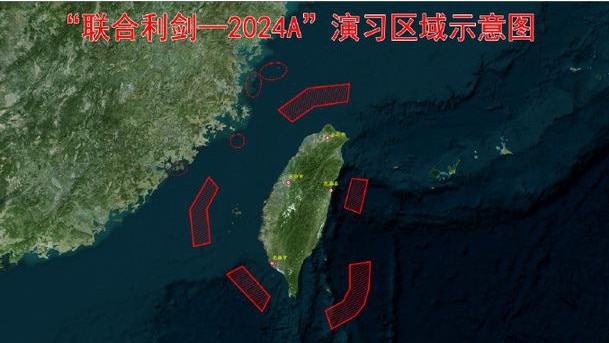
Taiwan has appealed to China to “be rational” and cease undermining peace and stability.
“We seek no conflicts, but we will not shy away from one. We have the confidence to safeguard our national security,” Taiwanese Defence said in a post on X before scrambling jets into the sky and putting land, missile and naval units on standby.
Australian Foreign Minister Penny Wong said a peaceful resolution was needed to resolve the tensions after large-scale Chinese military operations in the Taiwan Strait were described as
“deeply worrying”.
This week’s tensions come just three weeks after China’s Fujian quietly slipped from its berth at Shanghai’s sprawling Jiangnan Shipyard for the start of its maiden sea trials.
The formidable aircraft carrier is the largest and most advanced the Chinese navy has ever built, unveiled in 2022 but only now undergoing trials in the final step before service.
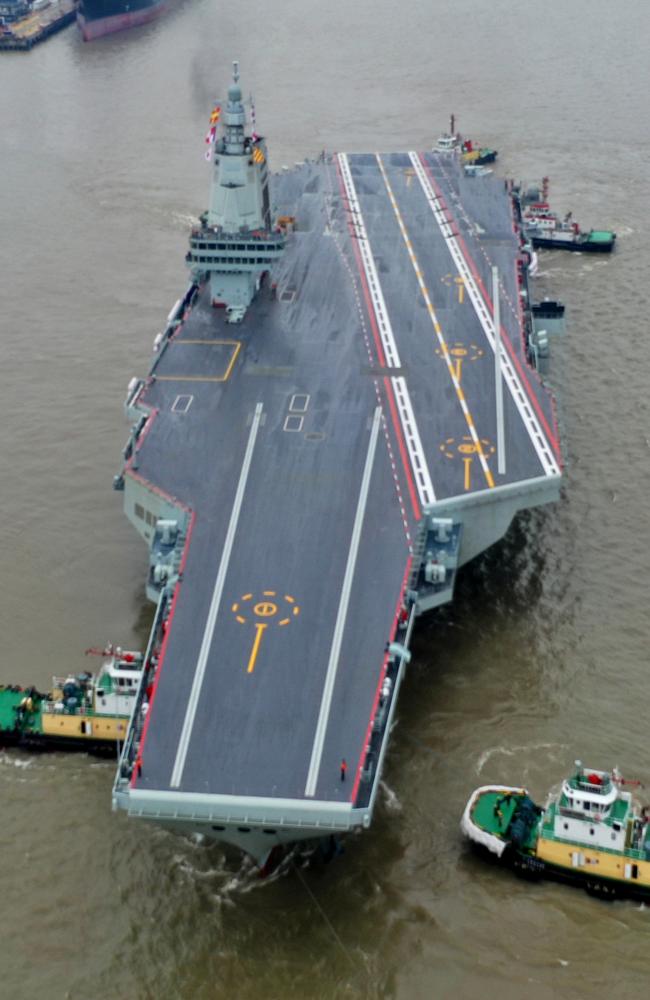
It is impressive to say the least; dwarfs the British HMS Elizabeth (launched in 2020), features electromagnetic-powered catapults allowing it to launch heavier and larger fixed-wing aircraft than conventional vessels, will carry 70 aircraft including 40 fighters and an airborne early warning electronic warfare aircraft, and carries a complement of 2000 sailors and 1000 aircrew.
But it’s the symbolism of its name that has the West ill at ease.
It was named after the province that faces directly opposite Taiwan.
Fujian is also where China’s President Xi Jinping and his closest cadre in the Communist leadership worked for years before he rose to become the nation’s supreme leader and from where he first plotted 20 years ago to take back control of the island nation.
The Fujian vessel is expected to enter full-time service in 2025, the year Taiwan has long flagged as when Beijing is expected to attempt to wrest back control of the democratic-run island with a full-scale invasion.
It could, of course, do an assault today but the ship is a game changer according to the US Pentagon, with an ability to project unprecedented striking power not only in the Taiwan Straits but deep “power projections” into the South China Sea and the Indo Pacific region.
The projections are a significant concern for the Australian Defence Force.

It’s the sort of regional power push that the Australian government’s 2024 National Defence Strategy warned about, that optimistic assumptions in defence planning post the Cold War “are long gone”.
“Our environment is characterised by the uncertainty and tensions of entrenched and increasing strategic competition between the United States and China; large-scale war has returned to the European continent; and conflict is once again gripping the Middle East,” Defence Minister Richard Marles said in releasing the report in April.
“This competition is accompanied by an unprecedented conventional and non-conventional military build-up in our region, taking place without strategic reassurance or transparency. The effects of this military build-up are occurring closer to Australia than previously, including a competition for security partnerships in Australia’s immediate region.”
The report flags China’s already coercive tactics in pursuit of its strategic objectives including forced intercept of ships in international shipping lanes and the “miscalculation risks” it creates had notably seen Australia’s strategic outlook “deteriorate in the past 12 months”. China had also employed a paramilitary fleet of armed fishing boats to harass shipping lanes.
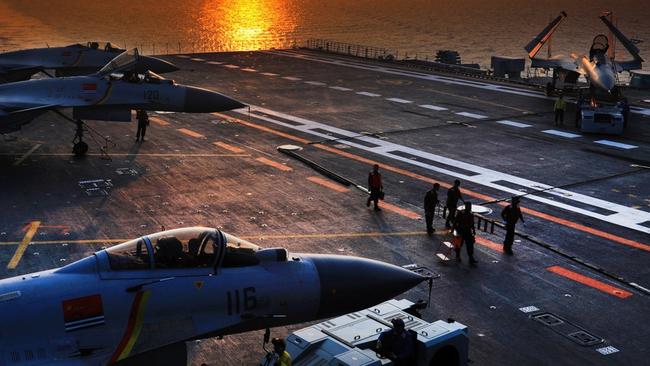
“The risk of a crisis in the Taiwan Strait is increasing as well as other flashpoints including disputes in the South and East China Seas … there is increasing competition for access and influence across the Indian Ocean including efforts to secure dominance over sea lanes and strategic ports,” it outlines.
That lack of transparency no doubt reflects the Solomon Islands security pact signed with China last year, that neither country today will detail. The Solomons earlier this month elected a new prime minister in Jeremiah Manale; no coincidence then Mr Marles flew out to the strategically positioned Pacific nation this week to meet the new leader and discuss security partnerships.
The outgoing commander of US Indo-Pacific Command Admiral John Aquilino, retiring this month, said China was pursuing a “boiling frog” strategy, gradually raising the temperature so the ultimate danger is not realised until it was too late.
He urged the US and its allies, notably Australia, to increase its defence hardware stocks and preparedness pronto.
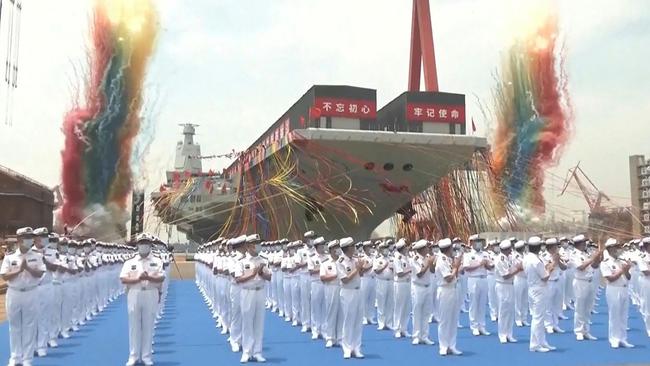
The former Top Gun pilot said the tempo had increased in recent times and in the three years since he’d been in command, China had built more than 400 aircraft, 20 major warships, including the Fujian, and doubled its missile inventory. The Fujian took just over five years to build.
He said President Xi had no doubt tasked his military to deliver the capabilities needed to be able to take on a Taiwan problem by force, most likely by 2027.
“There needs to be a continual description of China’s bad behaviour that is outside legal international norms and that story has to be told by all nations in the region,” he said.
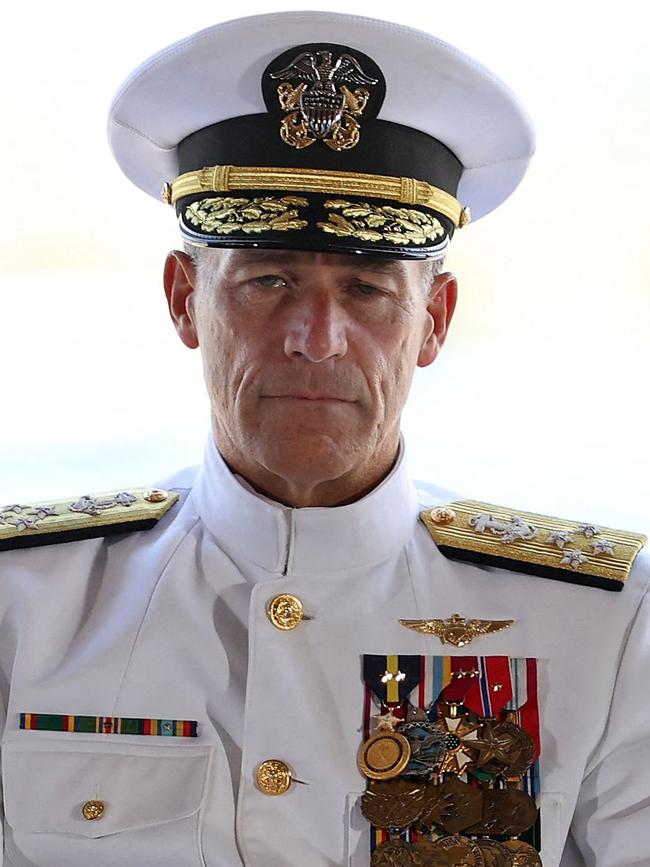
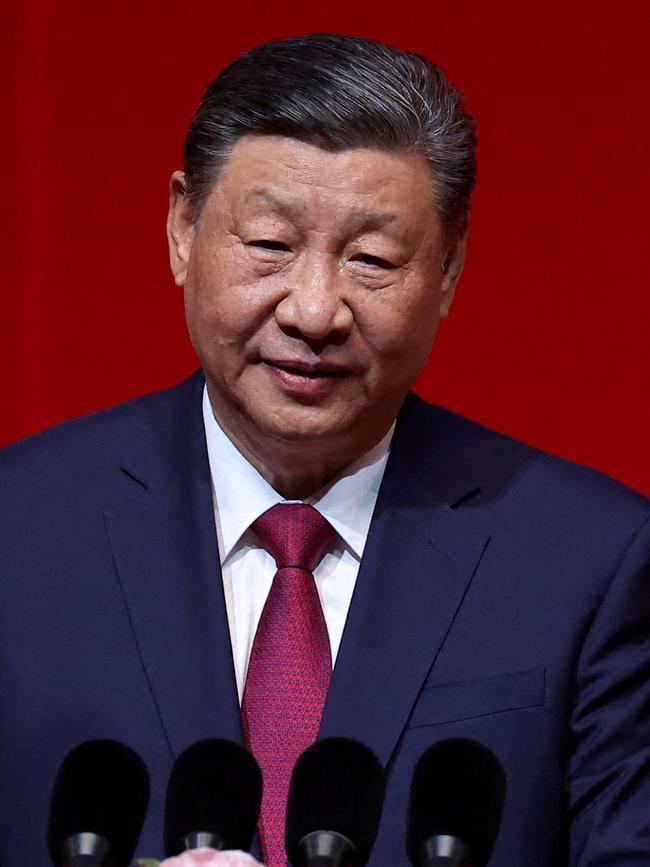
He also flagged the potential for a military miscalculation sparking something wider.
For Australia, that happened yet again when a Chinese aircraft fired flares in front of and above a Royal Australian Navy helicopter from HMAS Hobart participating in an operation to enforce UN sanctions against North Korea in international waters of the Yellow Sea. It followed a 2023 incident where a Chinese PLA Navy ship hit HMAS Toowoomba divers with a sonar in what the ADF branded was “done intentionally with foresight that ADF personnel would likely be injured”.
China claimed the helicopter in the latest incident was in its airspace as it claims ownership of the Yellow Sea to Korea’s shore, as it does virtually all of the South China Sea.
Sam Roggeveen, former strategic strategist with Australia’s peak intelligence agency, the Office of National Assessments, and now Lowy Institute’s director of international security program, said it was a clear pattern of behaviour endorsed at the highest levels – not the actions of an overzealous pilot.
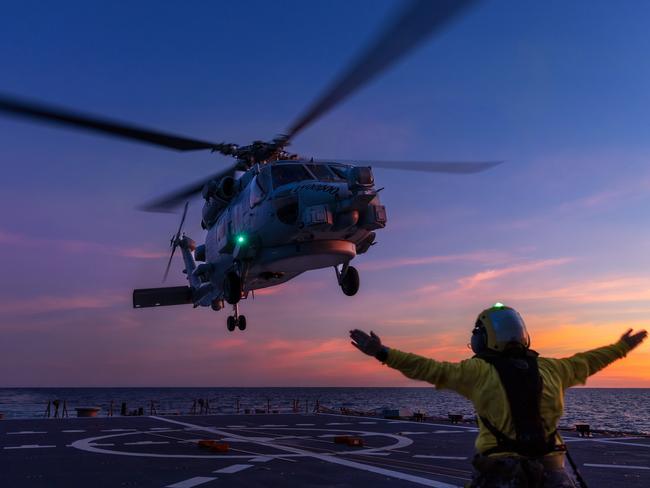
But he noted in Lowy analysis that as well as protesting vigorously, Australia should respond in non-military ways including announcing an initiative for the Pacific where China seeks to exert influence, such as in Cambodia where it has set up a semipermanent port.
“With every Chinese provocation, Australia could announce a new initiative with a Pacific island or Southeast Asian neighbour, the overall objective of which will always be the same: to strengthen diplomatic and defence co-operation in ways that erode the likelihood that these countries would ever consider hosting Chinese military facilities.”
Perhaps adding weight to Adm. Aquilino’s boiling frog scenario of the slow long game is Beijing now looking to pass a new law of “defence education”.
Under that law all high school pupils in China will be forced to undergo mandatory military service, including drills for pupils aged 12 to 15, with the syllabus to be extended also to primary school.
President Xi said it was about building greater military capacity but also his belief the population was losing “patriotic focus” and men their masculinity courtesy of pop culture.
“This is all aimed at strengthening the public’s preparation for military struggle,” according to Willy Lam, senior fellow at US defence policy think tank the Jamestown Foundation.




